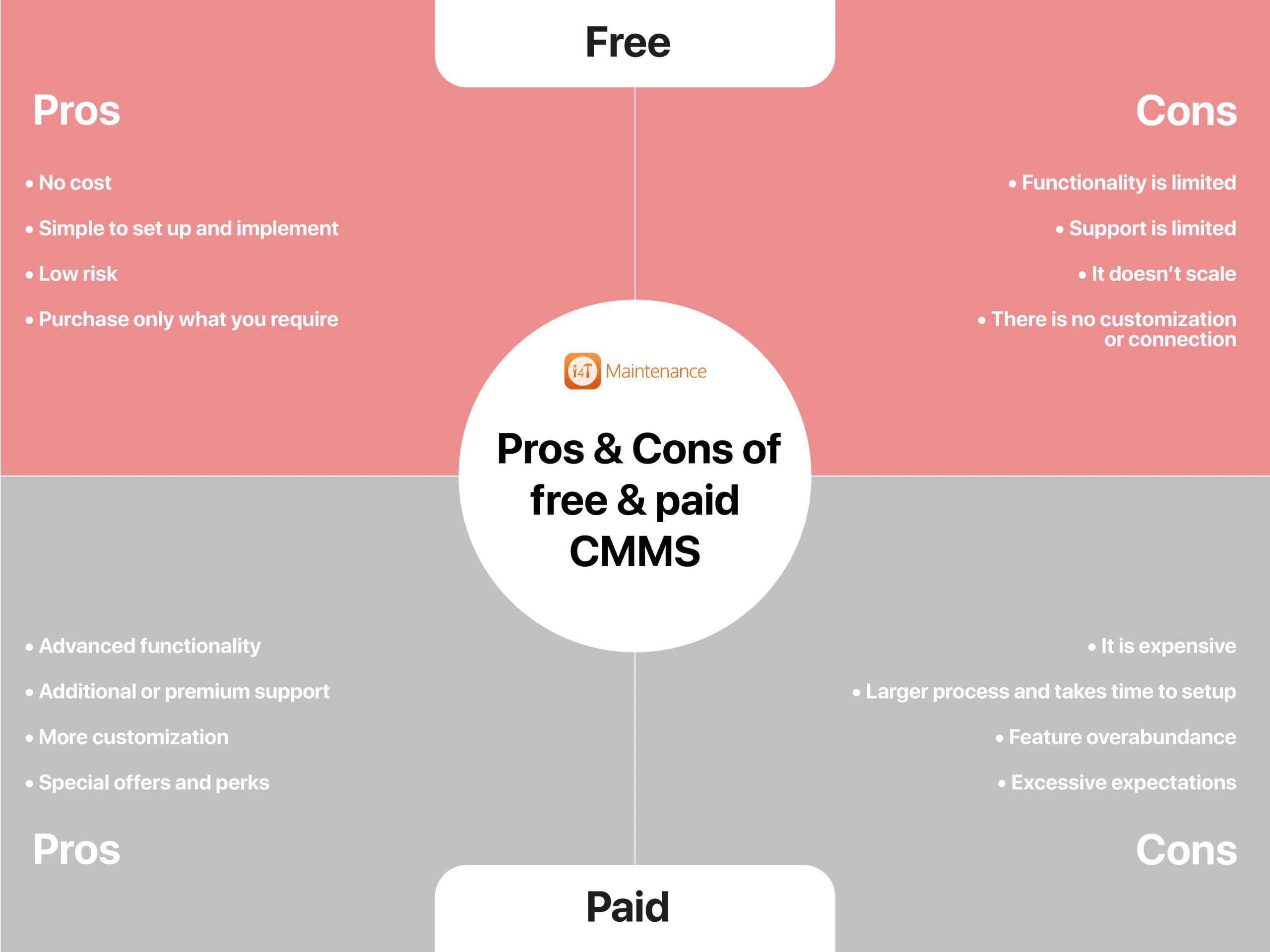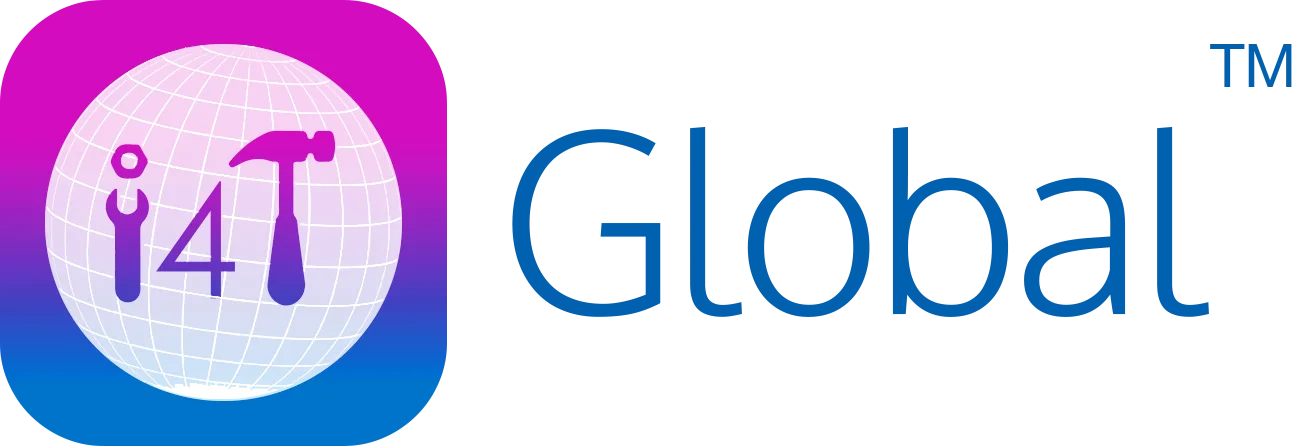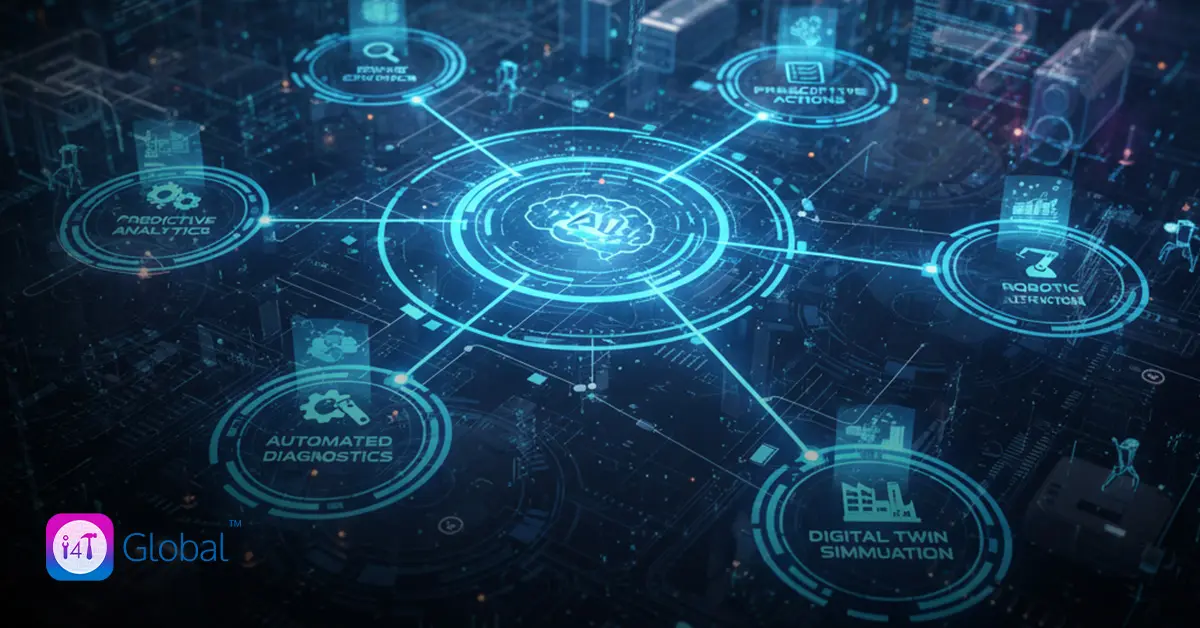Property Maintenance without any CMMS
Paper Maintenance
Just a piece of paper and a pen is all you need! The simplest and oldest method is Paper Maintenance. Each action is documented in a notebook or on sheets of paper.
This is definitely not a practical approach.
Sharing information is challenging, consulting the interventions’ history is time-consuming (because it is only available on a single document), and tracking each and every activity is impossible.
Excel Spreadsheets

However, access to information, operational planning, and use continues to be severely restricted. Maintenance teams find it difficult to use Excel because it is time-consuming and does not encourage careful monitoring.
Related Article: Is it possible to Automate Field Service Management and Remotely Manage your Properties?
Challenges faced when using a Free CMMS
Based on the recent survey we conducted at i4T Global, here are the top 5 responses we got from Facilities/Maintenance Managers regarding the Free CMMS they use.
“The Free CMMS Software we use looks like it’s stuck in the 1990s. So outdated!”.
“Our Free CMMS restricts the number of users and charges extra payment to add more”.
“Our Free CMMS isn’t customizable”
“Our Free CMMS lacks the maintenance scheduling modules we need”.
“Our Free CMMS doesn’t generate any reports for us to make better decisions”.

Free vs Paid CMMS Software
1. Functionality
The features available to you and how you can use them define the functionality of CMMS software. Setting up scheduled maintenance, for example, is a functionality. The functionality of free and paid CMMS software differs in two ways.
The first is that a free CMMS frequently has limited functionality. You can perform basic tasks such as creating maintenance schedules, dashboards, and asset logs. However, you miss out on more advanced features such as creating reports, e-signing closed work orders and generating malfunction standards.
The second difference is that free software frequently has functionality limitations that paid software does not. A free CMMS, for example, may only allow you to create 30 scheduled maintenance tasks per month.
When you pay for a full subscription, these restrictions are usually removed, though this varies by feature and tier.
2. Implementation
Implementing CMMS software requires more than simply creating a password and entering some information into the system. It includes:
- Scheduled maintenance tasks and triggers are being uploaded.
- Asset information is being added, and assets are being organized into hierarchies.
- Setting user permissions and creating user profiles
- Parts and minimum quantities are defined, and bills of materials are attached to work orders.
- Connecting your CMMS to third-party software
- Staff education on how to use the system
- Installing the mobile app on all of the user’s devices
- Report creation and scheduling
Implementing free CMMS software is typically a do-it-yourself (DIY) project. You are most likely familiar with resources such as help articles, training videos, and basic vendor support. However, you are doing the legwork to set up and launch the system as well as the processes that go with it.

3. Post-Sales Support
Ongoing post-sales support is the assistance you get from your CMMS vendor for daily troubleshooting or system improvements. For example, you may require ongoing support if:
- You want to make a field on your work order request form mandatory but are unsure how to do so.
- If you want to change user permissions but don’t know-how,
- If you want to create a new report that shows the impact of maintenance on your company’s energy consumption.
There are usually different levels of ongoing support depending on whether you use free or paid equipment maintenance software. Regardless of tier, a cloud-based CMMS will always provide a basic level of service.
Security measures, for example, will always be automatically updated by the vendor, no matter what. Support via phone, email, or online chat (though not always 24/7), a free community of users, and an online FAQ center are also common features of free services.

When you purchase a paid version of equipment maintenance software, you typically gain access to additional support services. This can include a dedicated customer service representative and priority access when requesting assistance.
Your subscription may include a certain number of hours of premium support. If you go over that limit, you may have to pay more.
Pros and Cons of Free CMMS

Pros of using Free CMMS
1) . No cost
Improve your maintenance without allocating a budget or waiting for approvals.
2). Simple to set up and implement
Fewer features imply a more streamlined experience for administrators and users.
3). Low risk
Before investing money in new processes or systems, test them on a small scale.
4). Purchase only what you require
If you have a small team, you can get the tools you need without having to pay for features you won’t use.
Cons of using Free CMMS
1). Functionality is limited
Fewer users, fewer features, and a limit on the number of actions possible
2). Support is limited
During business hours, you can get basic support such as help desk articles or phone support.
3). It doesn’t scale
Your CMMS will be unable to keep p with the growth of your maintenance team.
4). There is no customization or connection
There is very little ability to modify workflows, and there is no ability to connect the software to other systems.
Pros and Cons of Paid CMMS
Pros of using Paid CMMS
1). Advanced functionality
You have all of the tools you need to manage maintenance at your disposal, with few or no restrictions.
2). Additional or premium support
You now have more resources to help you get the most out of your investment.
3). More customization
You have more control over how your CMMS is designed and which modules you need.
4). Special offers and perks
You will typically have access to special events, feature testing, and other benefits.
Cons of using Paid CMMS
1). It is expensive
This isn’t necessarily a disadvantage if you see a return on investment, but it does take up budget space.
2). Larger process and takes time to setup
It will take more time to implement and become accustomed to the software.
3). Feature overabundance
You may not use all of the features for which you have paid.
4). Excessive expectations
Even if you understand that a CMMS is not a panacea, you may be expected to deliver results faster than you are capable of.
Conclusion – As a result, it can be concluded that there isn’t much room for free CMMS solutions. They lack features and are rarely adapted to the challenges that businesses face when attempting to increase productivity.
Choosing a paid software allows you to acquire a tool tailored to your business, be accompanied by quality support, and benefit from regular functional evolution.
Related Article: A Comprehensive Guide to Choosing a CMMS Software
Hot off the press!

With our cutting-edge technology and in-depth knowledge of how the Field Service Management sector operates, the i4TGlobal Team loves to share industry insights to help streamline your business processes and generate new leads. We are driven by innovation and are passionate about delivering solutions that are transparent, compliant, efficient and safe for all stakeholders and across all touch points.




